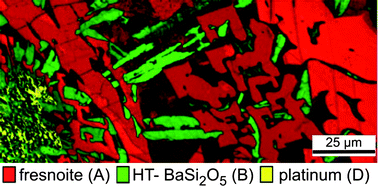Composition and texture of barium silicate crystals in fresnoite glass-ceramics by various scanning electron microscopic techniques
Abstract
Highly oriented fresnoite glass-ceramics were prepared from a non-stoichiometric melt (Ba2TiSi2O8 + 0.75 SiO2) by electrochemically induced nucleation. By using


 Please wait while we load your content...
Please wait while we load your content...